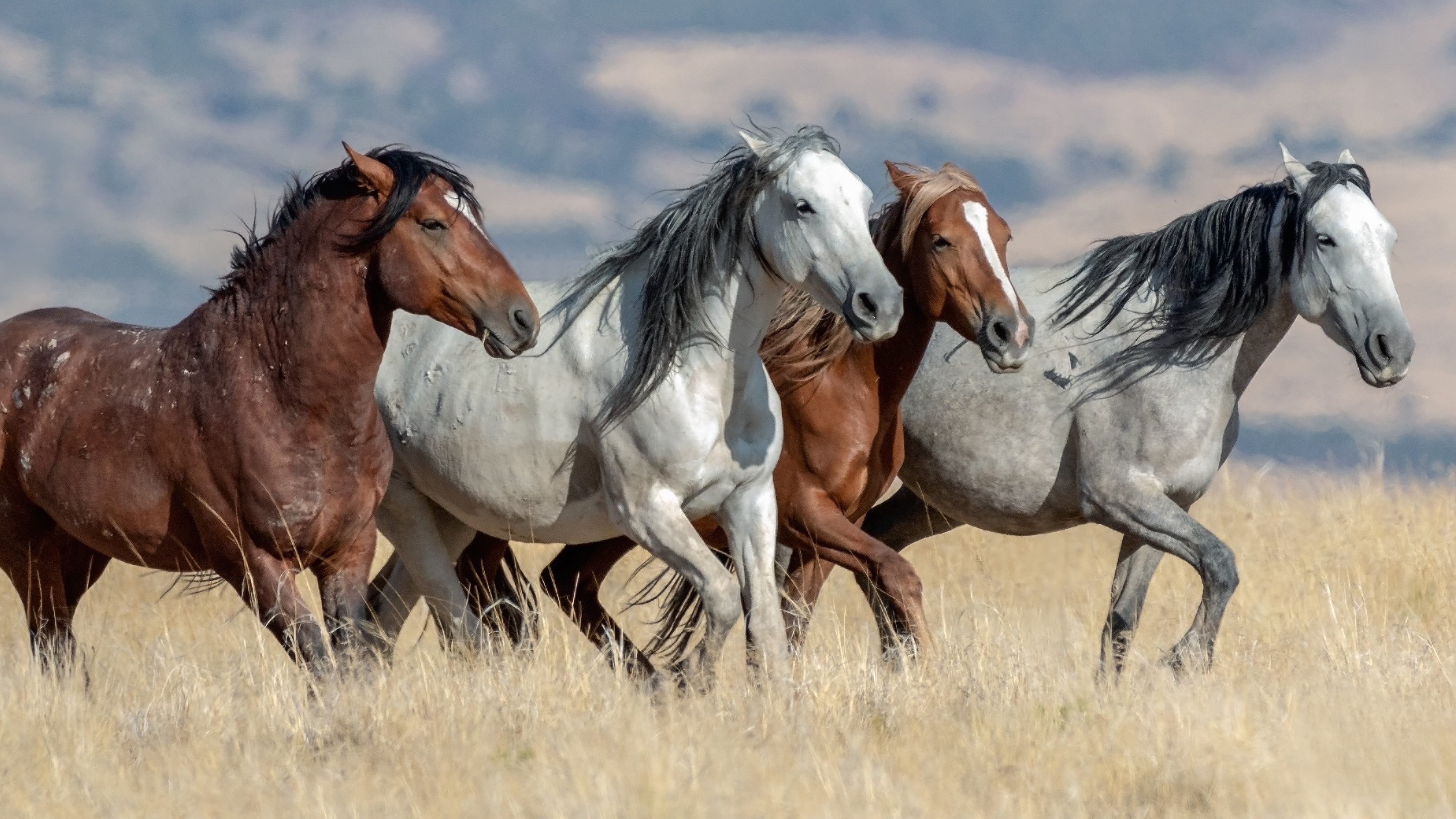
Horses that live in an untamed state but have ancestors who have been domesticated are not true wild horses. Many horses live to be over thirty years old much longer than even the oldest cats or dogs.

The opposite is truethere are too few wild horses and burros on our public lands and unless their numbers grow the survival of these special animals is in jeopardy.
How old do horses live in the wild. 7 rows On average wild horses dont live as long as domesticated horses since they dont receive. According to statistics the average life expectancy of any horse is 35-40 years. But this figure rather shows the most advanced age to which one lives.
To know exactly the life of your horse just check some data. Answered December 31 2020 Author has 59K answers and 48M answer views. Well in Wild West times 1870ish through 1910ish you must realize that there were far more horses living in cities than in the Wild West.
In the west under the care of a ranch horses were often rounded up at any age and if they were between three and ten and healthy they might be broken and live in a. The average horse lives between 25 and 35 years. The span of 10 years is because of varying factors like breed size genetics and proper care.
Ponies tend to live longer than larger horses and can be seen thriving well into their late thirties and even forties. Free-roaming horses occupy 316 million acres of federal land in the United States. Wild horses are now limited in the areas in which they can reside and have a limited grazing range controlled by the government.
The average wild horse will live between 15 and 20 years although they can live to be older than 20. Many domestic horses can now live into their 20s or even 30s simply because they receive good care and never lack food and shelter. The primary reasons that lead to death of a wild horse in its teens are.
Arthritis caused by wear and tear in the joints due to constantly being on the move. Many horses live to be over thirty years old much longer than even the oldest cats or dogs. In fact many horses live beyond the age of 30 with good care.
Some senior horses are still ridden or driven lightly. Variations in Horse Longevity. From 2 years to 3 years old a horse year is 5 human years.
From 3 years old the rate slows down but its still much faster than humans averaging around 25 horse years per human year. This means a 5-year-old horse is roughly 23 years old in human years. This rate of equivalent aging is then maintained for the rest of your horses life.
The Wild Horse is a member of the Equidae family along with zebras donkeys and moreResearchers recognize three different subspecies the domestic horse Przewalskis horse and the now-extinct tarpan. Some people call feral horses wild but they are simply herds of domestic horses that roam various regions. Because the only wild subspecies alive today is the Przewalskis.
The domestic environment in which horses live can at times be vastly different from the environment theyd inhabit out in the wild. In domestic situations horses may be confined to a stall or a yard for part or even most of their day. They may otherwise be found in a small field or paddock or out in a large grassy area where they can.
Horses that live in an untamed state but have ancestors who have been domesticated are not true wild horses. They are feral horsesThe only truly wild horses in existence today are the Przewalskis horse native to the steppes of central Asia. The best-known examples of feral horses are the wild horses of the American west.
Ranchers turned horses out on the open range to live and breed. When needed they would round up horses and their offspring for use as ranch horses. For generations ranchers used land that would later become the park for open-range grazing.
After the park was fenced a horse round-up held in 1954 removed 200 branded animals. There are too many wild horses and burros on public lands and their numbers must be reduced. The opposite is truethere are too few wild horses and burros on our public lands and unless their numbers grow the survival of these special animals is in jeopardy.
During the 1800s it is estimated that there were more than two million wild horses and burros roaming the West. In North America wild horses are found on the islands off the Atlantic coast and in other areas in the United States. Some of the states they are found in include Arizona Montana Utah New Mexico and North Dakota.
Horses are not counted in every area in which they live so no one is really sure how many are left. Horses are highly social herd animals that prefer to live in a group. An older theory of hierarchy in herd of horses is the linear dominance hierarchy.
Newer research shows that there is no pecking order in horse herds. Free ranging wild horses are mostly communicating via positive reinforcement and.